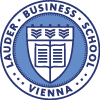[vc_row][vc_column width=”1/1″][vc_column_text]Principal Investigator: Prof. (FH) Mag. (FH) Martin Samek
Collaborators: IML 2011 students
Cooperation partners: Sigmund Freud Museum, Mag. Peter Nömaier, MA
Duration of the project: June 2012 – May 2013
Contact: [email protected][/vc_column_text][vc_empty_space height=”32px”][vc_single_image image=”18293″ border_color=”grey” img_link_target=”_self” img_size=”medium”][vc_empty_space height=”32px”][vc_column_text]Objectives of the project
Since 1971, the Sigmund Freud Museum is welcoming guests in the very apartment where Sigmund Freud lived and worked for 47 years. The museum has developed remarkably over the past 47 years: From a small place of commemoration with 8,000 visitors per year, it became a museum with 70,000 guests, providing Europe’s largest library on psychoanalysis with 38,000 volumes as well as a program of scientific events and an archive with 50,000 volumes.
Since 2003, the museum is managed by the Sigmund Freud Foundation, which is also the owner of the property at Berggasse 19. Decreasing public funding combined with increasing visitor numbers, who do not only create financial income but also infrastructural needs, lead to an intensification of fundraising efforts. In Austria, the Society of Friends of the Sigmund Freud Museum is an active society of company sponsors.
To enable fundraising in the U.S., where Sigmund Freud is more recognized than in Austria, the Freud Foundation U.S. was established in 2006.
This foundation has the goal to raise funds for its own purposes, like organizing events in the U.S., and especially for the museum here in Vienna.
Despite having secured some major contributions to the museum, the board of the Foundation U.S. as well as the board of the Sigmund Freud Foundation in Vienna seek new ideas in conception, coordination and communication.
We strived to set up a strategic approach to fundraising, based on a clear concept and outlines of cooperation and communication. Therefore the main goal of the project was to develop a fundraising concept for the Sigmund Freud Museum addressing potential donors in the United States of America.
The key objectives of the project are
• to develop a framework for an active and permanent communication between the foundations in Vienna and New York
• to create a concept for a fund raising campaign in the U.S.
• to identify potential target groups and to develop an approach strategy
• to design possible incentives for financial contributors and facilitators
Research methods
The research process comprised a qualitative secondary analysis of resources with a special focus on fundraising in the United States of America, fundraising for NPOs, especially museums and research institutions, followed by an evaluation of the feasibility and potential to approach the identified segments of donors. The research components of this project work consisted of an analysis and evaluation of contemporary fund raising methods, tools and techniques, and an assessment of best practices in fundraising with a special focus on museums. Research has been conducted to identify potential target groups, their preferences regarding the form of contribution, amount, place and promotion and to learn about the channels of communication with the museum, respectively the supporting fundraising organization.
Outcome
In accordance with the mission and strategic goals of the Sigmund Freud Museum, strategies have been developed to target the segments named Hollywood Psychology Related, Heritage Individual and Business/Corporate. For each respective target group a “fundraising mix” in the style of a marketing mix, consisting of the contribution option, amount, place and promotion has been devised. The project group suggested (a) a membership-based form of donation for the Psychology Related group, (b) a tourism/travel related option for the Heritage Individual segment, (c) the venue Berggasse 19 as the focal point for the Hollywood target, and (d) a platform for Scientists in Residence for donations from the Business/Corporate segment. This paper concludes with an HR and business plan for this fundraising strategy.
[/vc_column_text][/vc_column][/vc_row]


Recent Comments